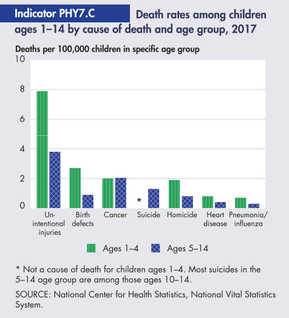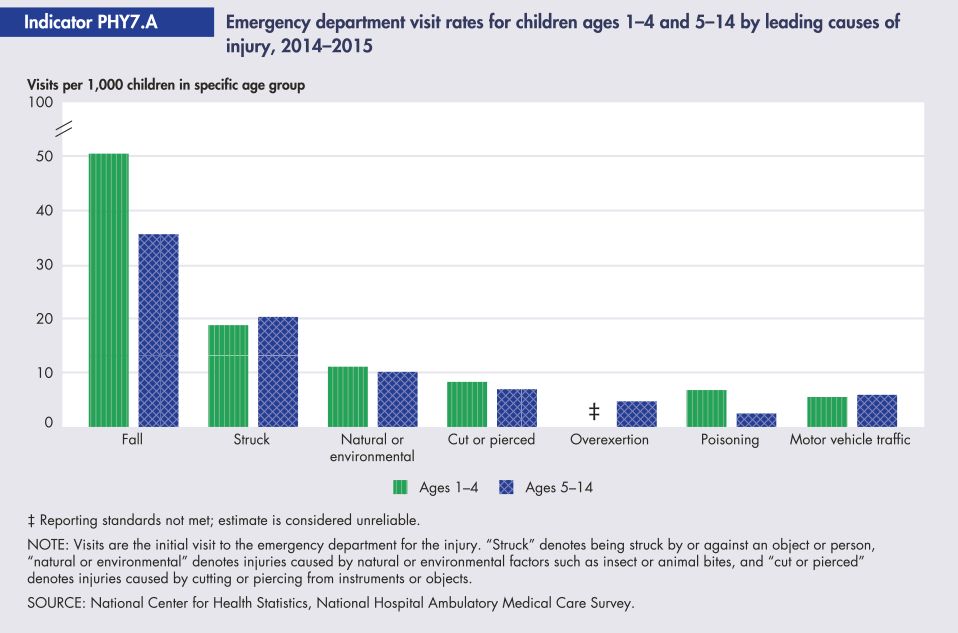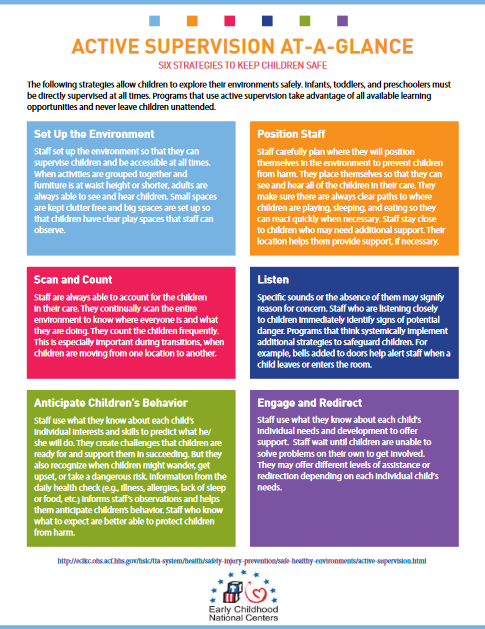Active Supervision
Culture of Safety
School readiness begins with a culture of safety. Active Supervision ensures a balance of learning opportunities while at the same time focusing on injury prevention strategies. Why is this important? As you can see in the chart below, the leading cause of death in children ages 1-4 is Unintentional Injuries, and the leading cause of injuries is Falls.
School readiness begins with a culture of safety. Active Supervision ensures a balance of learning opportunities while at the same time focusing on injury prevention strategies. Why is this important? As you can see in the chart below, the leading cause of death in children ages 1-4 is Unintentional Injuries, and the leading cause of injuries is Falls.
How can we prevent unintentional injuries and deaths?
"(Early/)Head Start staff can reduce the possibility of a child getting hurt when they closely observe children and respond when needed. When programs think systematically about child supervision they create safe, positive learning environments for all children.
Using active supervision means that programs:
"(Early/)Head Start staff can reduce the possibility of a child getting hurt when they closely observe children and respond when needed. When programs think systematically about child supervision they create safe, positive learning environments for all children.
Using active supervision means that programs:
- Develop a systems approach for child supervision
- Provide staff development and resources to ensure program-wide implementation
- Use redundant strategies to ensure no child is left unattended" ~Early Childhood Knowledge and Learning Center(ECKLC)
|
Annual Active Supervision Training and Plan Development Steps
|



